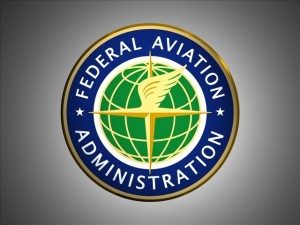 The FAA wants the tech sector to discover new ways to keep drones away from the nation’s airports.
The FAA wants the tech sector to discover new ways to keep drones away from the nation’s airports.
The federal agency today announced a new Cooperative Research and Development Agreement with Gryphon Sensors, Liteye Systems and Sensofusion to deploy drone-sensor prototypes at select airports, an FAA press release stated. The agency emphasized it would work with other federal agencies – especially Homeland Security – to ensure the systems don’t interfere with normal aviation systems at area airports.
The plan is one piece of the FAA’s Pathfinder Initiative which is designed, the agency says, to address three areas of national drone integration – “visual line-of-sight operations in urban areas, extended visual line-of-sight operations in rural areas [and] beyond visual line-of-sight in rural/isolated areas.”
“Sometimes people fly drones in an unsafe manner,” said FAA senior drone integration advisor Marke “Hoot” Gibson. “Government and industry share responsibility for keeping the skies safe, and we’re pleased these three companies have taken on this important challenge.”
The trio of drone defense companies echoed the FAA’s optimism:
“Detecting these threats is challenging because most of them are very small, fly low to the ground and can be pre-programed to fly autonomously,” said Gryphon Sensors President Tony Albanese.
“As the legitimate use of unmanned vehicles becomes more prevalent in many industries, unfortunately this large number of aircraft also makes them readily available for illicit use,” Liteye Systems president Thomas Scott said.
Sensofusion CEO Tuomas Rasila added that the foundation of drone-control systems began with military projects in 2013. “Fast forward to the present time, and AIRFENCE is now protecting various customer sites in Europe, including prisons, high profile government buildings, police, and military sites. Since the technology is software based, it improves with over-the-air updates, ensuring that we are always ahead of the commercial UAS market.”
The FAA has also partnered with DHS and CACI International on similar research to explore how that company’s prototype detection technology may help detect drones in unauthorized areas.
“The FAA supports DHS in an inter-agency effort to meet the threat of unauthorized UAS from a ‘whole of government’ perspective,” an FAA spokesperson stated, adding that the Department of Defense, Department of Energy, U.S. Secret Service and the FBI would also participate.
The FAA announcement comes on the heels of a recent NASA test deployment of the UAS Traffic Management (UTM) platform that included 24 drones flying simultaneously at the FAA’s six American test sites.
Jason is a longstanding contributor to DroneLife with an avid interest in all things tech. He focuses on anti-drone technologies and the public safety sector; police, fire, and search and rescue.
Beginning his career as a journalist in 1996, Jason has since written and edited thousands of engaging news articles, blog posts, press releases and online content.
Email Jason
TWITTER:@JasonPReagan
Subscribe to DroneLife here.







The phrase ‘illicit use’ should be the aim, not restrictive use for ‘responsible users’! I have no plans to fly near an airport but while I’m flying if I hear a plane or helicopter I bring the drone down & unless you deliberately leave it, there is loads of time to react!